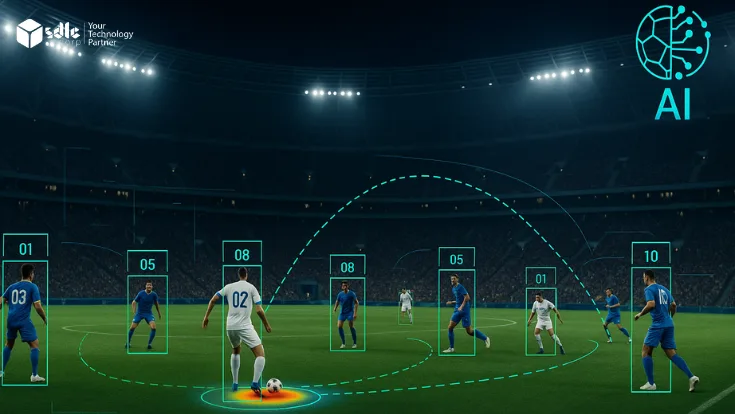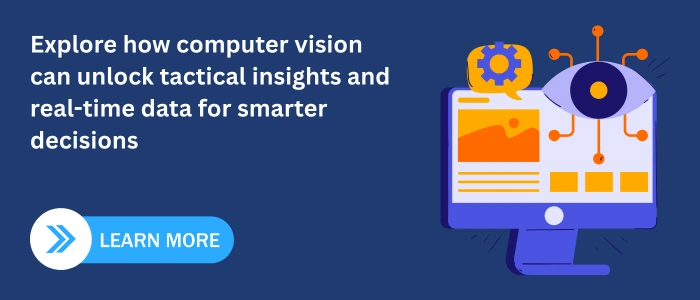Introduction
Tracking players accurately is no longer just about counting steps or marking positions on a field. Sports today demand insights into every movement, angle, and decision. Computer vision makes this possible by converting raw video into structured data that coaches, analysts, and fans can understand with help of AI. Unlike older tracking methods that relied on manual tagging or GPS-based wearables, computer vision uses cameras, algorithms, and machine learning. As a result, it can track multiple players in real time while ensuring the flow of the game is not interrupted.
For those interested in the technology behind it, advancements in Custom Computer Vision Development Services have been central to enabling such precise tracking systems, adapting algorithms to handle complex sports environments.
Why Computer Vision for Player Tracking Matters
Player tracking is not just about knowing “where a player is.” The purpose is to understand how they move, why they take certain decisions, and what impact those actions have on the game. Traditional methods like GPS trackers and RFID chips provide positional data. However, they often miss critical context, such as body orientation, acceleration bursts, or interactions with other players.
Computer vision overcomes these gaps by analyzing continuous video streams from multiple cameras, enabling:
- Non-intrusive tracking: No need for wearables.
- Contextual data: Ball position, player formations, and even gesture recognition.
- Scalability: Works across entire stadiums and different sports.
- Real-time analytics: Immediate insights for coaches, broadcasters, and fans.
Technical Foundations of Player Tracking with Computer Vision
Computer vision systems for sports tracking combine several components where behind every system is a vision engineer fine-tuning algorithms to adapt to dynamic sports environments.
1. Camera Setup and Calibration
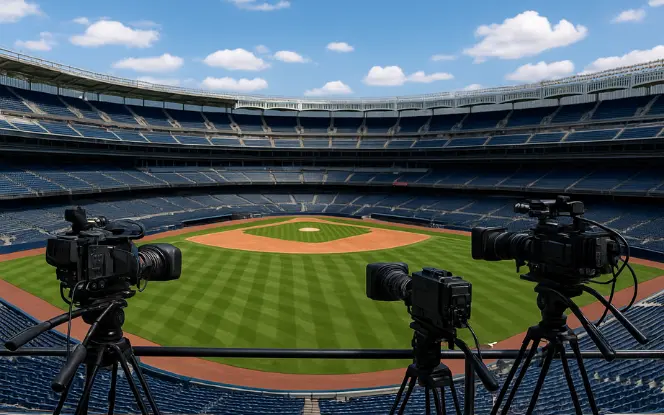
- Multi-angle cameras are placed across stadiums to minimize blind spots.
- Calibration ensures that every pixel in video corresponds to a real-world coordinate.
- Advanced models use homography (mapping 2D video to 3D field dimensions).
2. Detection and Segmentation
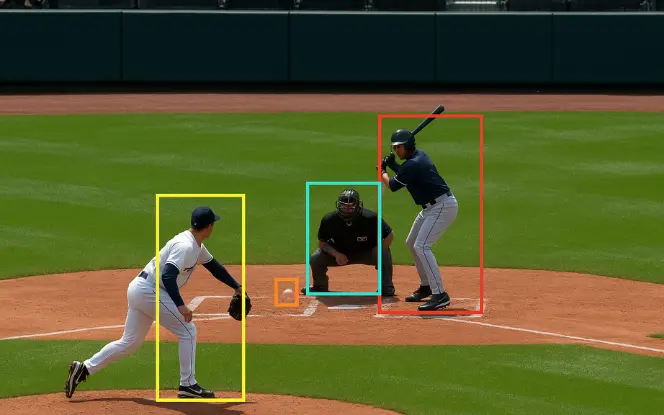
Player detection relies on advanced computer vision algorithms such as CNNs and object detection models.
- Object detection models like YOLOv8 or EfficientDet identify players and the ball frame by frame.
- Instance segmentation (Mask R-CNN, Detectron2) separates overlapping players.
- Uniform color, body posture, and skeletal models (OpenPose, MediaPipe) improve accuracy.
Many prototypes of tracking systems are built using computer vision Python libraries like OpenCV.
3. Player Identification and Re-Identification (Re-ID)
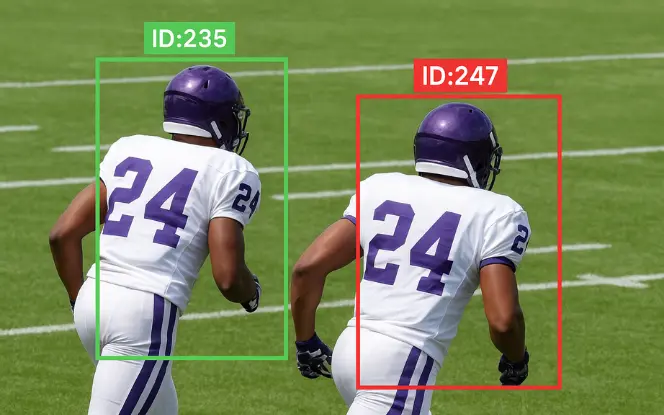
- Moreover, tracking multiple players becomes difficult when they look alike, such as when wearing the same jersey colors.
- Re-ID models use features like gait, body dimensions, and jersey numbers to maintain identity.
- DeepSORT or ByteTrack integrate detection with temporal consistency to ensure smooth tracking.
4. Trajectory and Motion Analysis
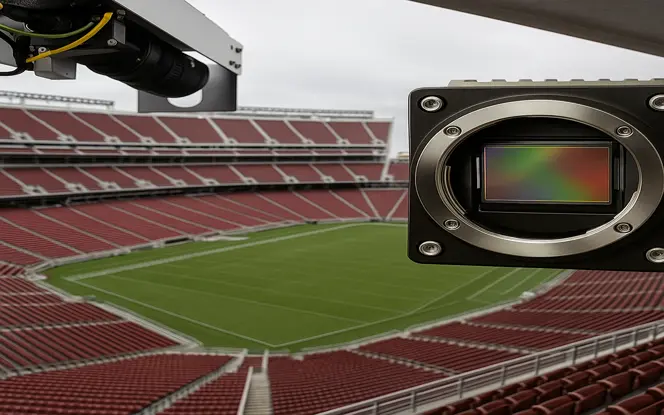
- Kalman Filters and Optical Flow are used to predict and smooth player movements.
- Trajectory clustering identifies play patterns, sprint bursts, and positioning strategies.
- Context-aware tracking links player movement with ball position.
5. 3D Pose Estimation
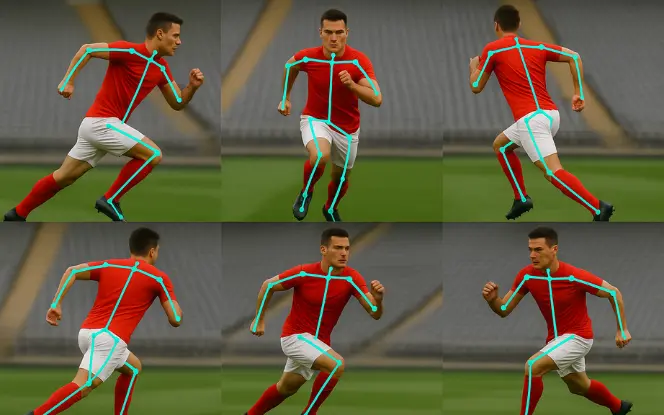
- Multi-view depth models reconstruct body skeletons in 3D.
- This helps analyze posture, joint angles, and biomechanics for performance optimization.
- Example: measuring stride length or jump height without wearable sensors.
6. AI Models for Event Recognition
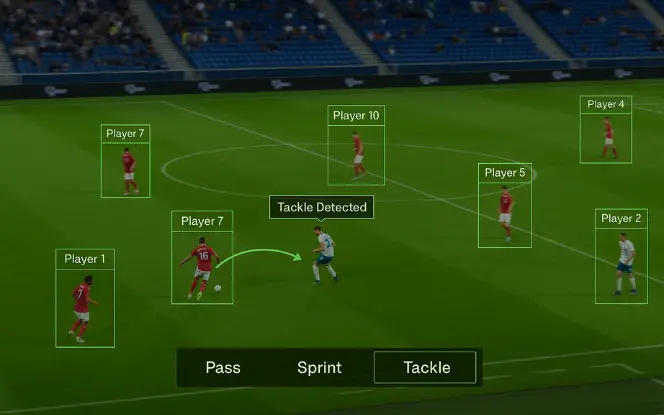
- Beyond positions, AI recognizes events: passes, tackles, offsides, or sprints.
- Action recognition networks combine visual cues with temporal sequences to label gameplay events.
Case Study 1: Football – Tactical Insights through Computer Vision
Football is difficult to analyze because it involves continuous player movement, wide playing areas, and frequent overlaps that make tracking players challenging. Computer vision has redefined tactical analysis by offering:
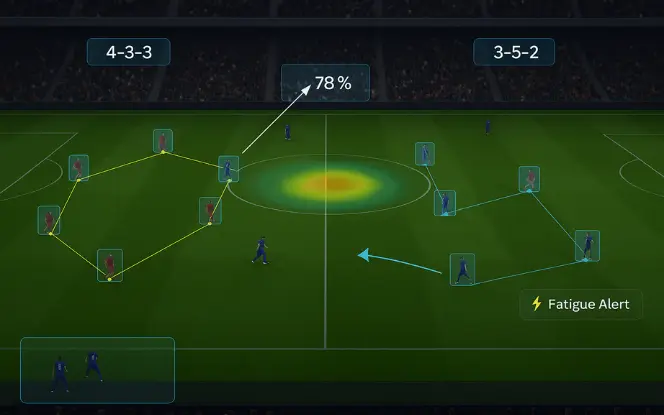
- Formation Recognition: Algorithms can identify whether a team is playing in a 4-3-3, 3-5-2, or another formation, and update this recognition in real time.
- Player Heatmaps: Vision-based tracking creates high-resolution heatmaps for movement density.
- Pass Prediction Models: Ball trajectory analysis helps identify high-probability passing lanes.
- Fatigue Monitoring: Stride analysis and deceleration rates signal early fatigue in players.
Example: During the 2022 Champions League, computer vision systems helped clubs monitor pressing intensity by calculating distance covered per pressing sequence.
Coaches adjusted tactics mid-game when a drop in pressing intensity was detected, ensuring the midfield remained compact and free of exploitable gaps.
Case Study 2: Quidich Innovation Labs – Transforming Cricket in India
In India, cricket broadcasting has been revolutionized by Quidich Innovation Labs using computer vision.
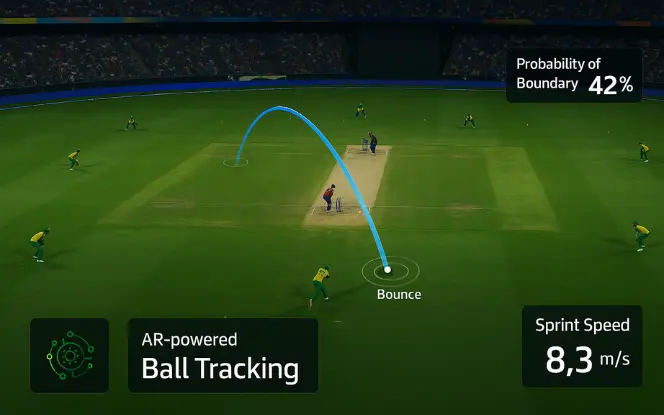
- Spidercam Integration: Quidich’s computer vision systems link aerial shots with real-time tracking overlays.
- AR-powered Ball Tracking: Predictive ball paths and bounce visualizations are created instantly.
- Fielder Position Analysis: Broadcasters can now display live player positioning maps for tactical depth.
- Fan Engagement: Viewers see augmented graphics such as “probability of a boundary” based on fielder density. Through computer vision sports analytics, fans now enjoy real-time stats overlays while watching live matches.
Impact: During the IPL, broadcasters reported a 25% rise in viewer engagement after adding Quidich’s CV overlays. Coaches also tapped into the same feeds to study bowling lengths and batting shot selection, turning broadcast data into a direct source of tactical insights.
Perspectives from Experts
1. Technology Experts
Dr. Ananya Mehta, Computer Vision Researcher:
“The challenge is not just detecting players, but maintaining identity when 22 players overlap, move rapidly, and look similar. Re-ID algorithms and multi-camera synchronization are the breakthroughs that make real-time football tracking possible.”
2. Industry Leaders
3. Sports Coaches
Coach David Miller, European Football League:
“Earlier, player fitness was judged by intuition. Now, I can see exactly when my midfielder starts losing sprint efficiency. Substitutions are no longer guesses—they are backed by movement data.”
4. Athlete’s Perspective
Professional footballer Maria Sanchez:
“Tracking systems showed I was slowing in the last 15 minutes of matches. With that feedback, my training focused on endurance, and I improved my late-game performance.”
How Player Tracking Boosts Fan Engagement
Computer vision-based player tracking in sports has evolved from a coaching aid to a fan-first invention. Sports organizations are revolutionizing the way viewers watch and interact with games by fusing vision AI, real-time data, and captivating visualizations.
1. Viewers' Real-Time Match Information
Sprint bursts, the speed of the runner and the distance covered can be overlaid onto the screen directly by the broadcaster through a computer vision algorithm able to interpret live feeds from multiple cameras. “It’s not just relying on commentary, it gives the fans a bit more of an insight into what the athletes are doing, and that engages them all the time.
In football, for example, AI-generated heatmaps give fans insight into tactics that were once the sole preserve of coaches, revealing the parts of the field that players spent most of their time on.
2. Second-screen experience and interactive statistics
Fans can have at their disposal interactive dashboards during live matches with the use of applied computer vision. This data, quite possibly to measure pass accuracy or compare the sprint speeds of two strikers, draw fans into AR/VR platforms or mobile apps. With computer vision AI, raw game footage can be transformed into actionable insights in real time.
Fans are now watching TV while looking at live stats on their phones, a convergence referred to as the “second-screen revolution,” industry experts say.
3. Enhanced Broadcast Storytelling
Broadcasters like Quidich in India have fused computer vision with live cricket coverage. By applying real-time drone tracking alongside ball-trajectory overlays, each delivery is framed with in-depth perspective. Audiences now move beyond passively consuming action, instead absorbing the sport with newfound sharpness and narrative depth.
4. Fan Experiences
AI and computer vision drive personalization in fan engagement. Devoted supporters dive into granular metrics—strike-zone maps, outcome likelihoods, passing heat overlays—while occasional viewers encounter stripped-back visuals like runs, shot maps, and delivery speeds.
The same dataset is repackaged to match attention spans. Today’s computer vision technology enables instant replay enhancements and automated highlight generation.
5. Fueling Fantasy and Betting Ecosystems
Accurate tracking feeds the engines of fantasy sports and wagering apps. Users applying real-time statistics to draft choices and betting lines heighten their involvement and the lasting pull of the platform, creating a feedback loop where analytics deepen the loyalty loop.
Future of Player Tracking
The future of computer vision in sports is crystalizing around a few key accelerations:
- Edge AI: Cameras on venue rafters will decide, in milliseconds, what feeds stream to replay bays, keeping every nuance in sync.
- Hybrid Systems: Wearable and field-camera data blended into a single story arc, offering coaches multidimensional insight at one dashboard.
- Predictive Modeling: Not just cataloguing every sprint and stop, but modeling torque loads to raise injury red flags before a grim MRI chat.
- Personal Fan Dashboards: Miniature telemetries tailor every stat hand to a user’s star, letting casual viewers ride a virtual shooting coach’s shoulder.
Conclusion
Vision-assisted tracking is no mere bar-graph upgrade; it is the new spine of the-ideology: play, prepare, experience. Football tacticians now design drills using 360-degree heat maps, while Indian cricket broadcasters dissect every seam delivery with micro-second optics—both powered by Quidich’s breakthroughs. United across analytics, hardware, tactics, and the instinctive will to play better, this community is converting vision into composite, real-time comprehension of every beat and flick on the pitch.
Sports are stories told through movement, and computer vision ensures that none of those movements go unnoticed.
FAQ's
What is computer vision-based player tracking?
Computer vision-based tracking uses cameras, algorithms, and AI models to detect, identify, and analyze player movements in real time. Unlike GPS or wearables, it provides non-intrusive, high-detail insights such as body posture, speed, and tactical positioning.
How is computer vision better than GPS or RFID tracking?
While GPS and RFID chips provide only positional data, computer vision captures richer context like ball interactions, player orientation, formations, and event recognition without requiring athletes to wear devices.
Which AI models are commonly used for player tracking?
Popular models include YOLOv8, EfficientDet for detection, Mask R-CNN for segmentation, DeepSORT and ByteTrack for player re-identification, and OpenPose or MediaPipe for skeletal pose estimation.
Can computer vision be applied across different sports?
Yes. Football, cricket, basketball, and tennis are already using it. With multi-camera setups and calibrated models, computer vision can adapt to different field dimensions and gameplay styles.
How does player tracking improve fan engagement?
Broadcasters use AI overlays like heatmaps, sprint speeds, and predictive ball trajectories. Fans also engage with second-screen apps, AR/VR dashboards, fantasy sports, and enhanced social media highlights powered by tracking data.
What is the future of player tracking with computer vision?
The future includes real-time edge AI processing, hybrid systems combining wearables with cameras, predictive injury prevention models, and personalized fan dashboards delivering custom analytics.

